Are you familiar with the term "creative operations"? If you're in marketing or a creative professional, it's a term worth knowing. Creative operations, or "creative ops," is the process of managing and optimizing creative production.
Similarly to marketing operations, it involves streamlining workflows, improving collaboration, and implementing best practices to ensure that your team is working as efficiently as possible. However creative ops has a more narrow focus on the productivity of design and creative projects.
In this article, we'll explore the importance of creative operations, how it can improve your creative output, and how it can enhance your team's productivity and culture. Let's dive in and learn more about what creative operations is all about.
What we'll cover
Table of contents
What is creative operations?
Creative operations is the framework that optimizes productivity and manages deadlines within creative and marketing teams, ensuring that projects are delivered on schedule.
Creative operations covers a wide range of things, including:
Project intake: Planning out the value of a project by capturing, evaluating, and prioritizing the ideas behind it, creating a project proposal, and then getting the go-ahead from senior management.
Editor’s note: Intake forms can simplify this process of gathering project briefs and new creative assets from clients, contractors and external collaborators. Read more in our blog post: Intake Forms: Bring Content into Your Creative Production Workflows (Without Email)
Project management: Starting, planning, executing, monitoring, and delivering the work of a team to meet specific goals all within set time constraints.
The creative brief: Closely following a document provided by the service requested that lists the deliverables of a project, which creative teams can then use to develop the necessary visual design, copy, and website assets.
Communication with clients: Speaking in non-jargon to clients, knowing how to listen, establishing a human connection, being sensitive to a client's comfort zone, and understanding their communication channels and when to use them.
Communication with project owners: Regularly touching base with project leaders and stakeholders through email, in-person and remote meetings, discussion boards, status updates, collaboration apps, and more.
Communication within the creative team: Portraying the right vision, providing details and context, making timelines and expectations clear, and trusting creatives to do what they do best with micromanaging their workflow.
Status updates: Giving timely updates on the progress of your projects, proactively answering questions, and providing high-level information to stakeholders.
Review: Identifying the deliverables produced to date, figuring out whether or not the project’s initial goals were met, and collecting and disseminating feedback for all project owners.
Revisions: After review, addressing any areas with potential for improvement, providing recommendations, and proposing a new plan of action.
Delivery: Presenting the final project to the client or internal stakeholder.
Creative operations vs. project management
Although there is an overlap, creative operations involves more than just managing projects. For creative operations:
- You need a strategic mindset, not just organization skills.
- You have to understand the different cross-functional tasks of many different creative teams (copy, design, digital, video, etc.) and bring them together as a collaborative unit.
- You have to be an expert at juggling the different things that come your way daily and managing the many different assets and systems involved in creative content production.
The responsibilities of people who work in creative operations include:
- Defining a formal process for creative content production for your organization and finding different ways to streamline it.
- Finding gaps in the tools and technology your creative teams use that are bottlenecking their workflows and identifying alternative solutions to ensure final projects are always as high-quality as possible.
- Knowing the right metrics and KPIs to determine creative project success. This can cover digital marketing metrics, attributed sales, and more.
Why is creative operations important?
Creative operations is important because the #1 objective is to improve the way work is done within creative teams.
Efficient creative operations bring structure, process, and metrics to the creative workflow to optimize timeliness, capacity, and costs. It does this by looking at the creative process as a supply chain, identifying where each move can be maximized with the same (or fewer) number of resources..
Christina Carr, head of Marketing and Creative Operations at Facebook, puts it nicely: "It's the business side of marketing and creative."
4 reasons why you need to use creative operations
Pioneering brands Macy's and Prudential were among the first to introduce a position for "Vice President of Creative Operations." Since then, interest in creative operations has skyrocketed.
Over the past decade, creative operations has evolved into a mainstream function for many organizations—it’s not just a “nice-to-have” anymore.
In fact, at the time this post was written, there are over 100,000 creative operations jobs available on Indeed.com.

Why the rising trend? Here are four reasons why.
Increased demand for creative assets
More and more organizations are realizing the importance of customer segmentation and targeting their marketing efforts.
The thing is, more marketing means more creative assets are needed and new, niche systems to produce and distribute them, which not all teams are ready for. This means they either need to hire more in-house creative workers or employ an agency to provide contractors.
Or, they need to optimize the way current teams are using their time, the technology they’re using, and the overall creative processes in order to output more assets with the same amount of resources.
Complex processes
If you don't have a formal, streamlined creative process in place, sharing of assets is likely quite complicated as team members are using email, text messages, documents, files, and more versus a centralized, collaborative environment. Furthermore, creative assets must be repurposed and reformatted for numerous channels--each which demand their own creative workstream.
No one should have to search through a messy folder on their desktop or wait for someone to come back from vacation to retrieve a file from their personal email address.
Creative operations aims to prevent this disorganization and streamline the creative process, which in turn provides more metrics and visibility.
Process Inefficiencies
Bottlenecks and wasted time are the banes of every business, but unfortunately, they are also inevitable without proper processes in place to capture and solve—or at least reduce—them.
To put these processes in place, however, you'll need a strong rationale behind doing so, defining exactly how each change will solve a problem. Creative operations gives you the data and analytics you need to provide this rationale.
Marketing Compliance
Depending on which industry you're operating in, you may be subject to specific legislation.
For example, healthcare companies need to comply with HIPAA, and finance companies need to comply with Sarbanes-Oxley. The purpose of such legislation is to prevent fraud and the misuse of customer data.
Creative operations take a closer look at your company’s creative process, ensuring full compliance with applicable laws and regulations in the event of an audit.
What are the benefits of using creative operations?
Increased collaboration
If your organization's creative processes aren't well-controlled, the workers are more likely to shy away from difficult situations rather than step up to them. When problems do arise, they may shift responsibility to others rather than be accountable themselves.
Not only does this create an unhealthy work environment, but it also means it's difficult to know where problems start and just who is sharing the most accurate information.
Creative operations helps alleviate this problem by encouraging a truly collaborative workflow, and by gathering data, clearly identifying where the issues are. When employees have access to this information, they’re empowered to take accountability for their actions and improve.
Data-driven decisions
A lot of the business decisions made in creative operations are driven by “gut feelings,” last-minute creative deadlines, or best guesses based on prior experience.
By collecting data, creative workers are empowered to make more accurate projections and sound decisions about their projects.
They’ll also be able to provide strong data-based reasoning behind requests for additional resources, budget, hiring, or new work.
More Accurate Project Forecasts
If you don’t know how long a project is going to take or what the potential blockers are going to be, your creative team will be left struggling to meet stakeholder expectations.
Creative operations solves this problem by defining these measures from the start and giving all stakeholders access to data from past projects to project the performance of current ones.
How different industries use creative operations
Creative operations is used across many different sectors, not just the creative design industries. Any industry where organizations have sales and marketing departments can use creative operations.
Here are some examples of how creative operations is used in different companies and how Ziflow can help.
Creative and digital agencies
Of course, creative operations can have a huge impact on creative agencies, helping teams stay ahead of schedule and deliver awesome work faster.
Ziflow lets these businesses standardize their review and approval processes across all media types, provide internal and external team members with real-time visibility and notifications, and ensure everyone is on the same page.
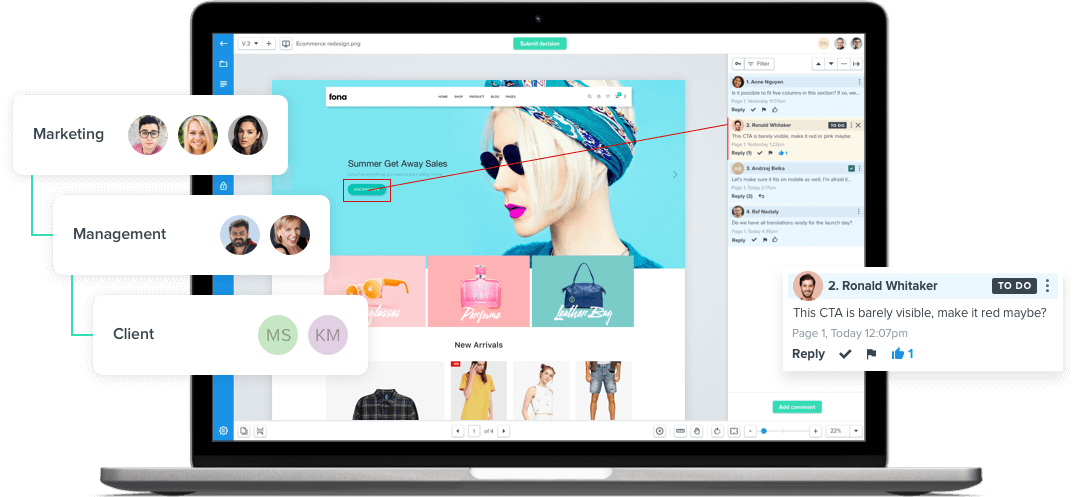
Read how a creative design agency streamlined the external review process with clients in our new case in this case study, "How Creative Firm Advent Streamlined Client Approval for Large-Scale Sports Facilities Design"
 Case Study: Copperwing Agency Fosters Internal Collaboration for Multi-Format Design Campaigns
Case Study: Copperwing Agency Fosters Internal Collaboration for Multi-Format Design Campaigns
Learn how a creative marketing agency streamlined remote collaboration using online proofing.
Marketing agencies
Creative operations reduces the effort needed by marketing agencies to produce great work by streamlining otherwise tedious tasks.
Ziflow lets marketing agencies standardize their review and approval processes across their client roster as well as build, track, and manage custom workflows to move projects to the next step of the process seamlessly. All while providing real-time visibility and notifications.
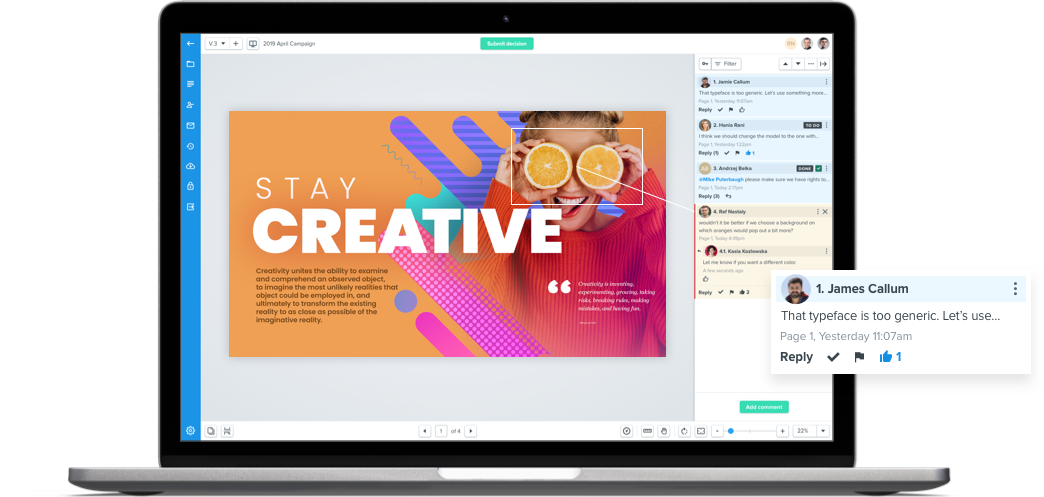
Manufacturing
Manufacturing companies use creative operations to collaborate more effectively in their day-to-day activities.
With Ziflow, they’re able to deliver their projects up to 56% faster than before they adopted online proofing, with 29% fewer revisions.
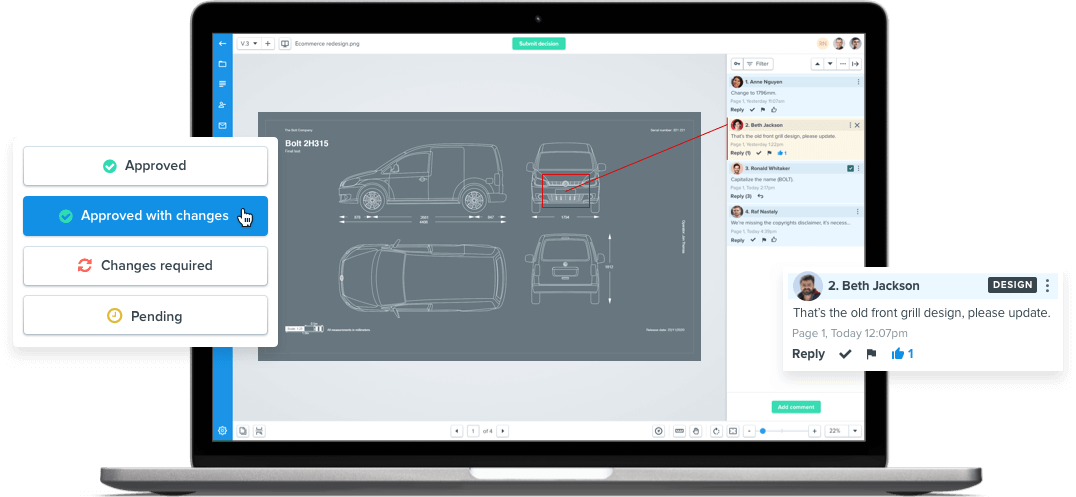
Retail
Customer experience is critical to a retail company’s success, and creative operations help to implement it across all your different marketing channels.
Ziflow helps retail companies execute great physical and digital customer experiences across any channel by streamlining the proofing process, delivering projects faster than ever before.
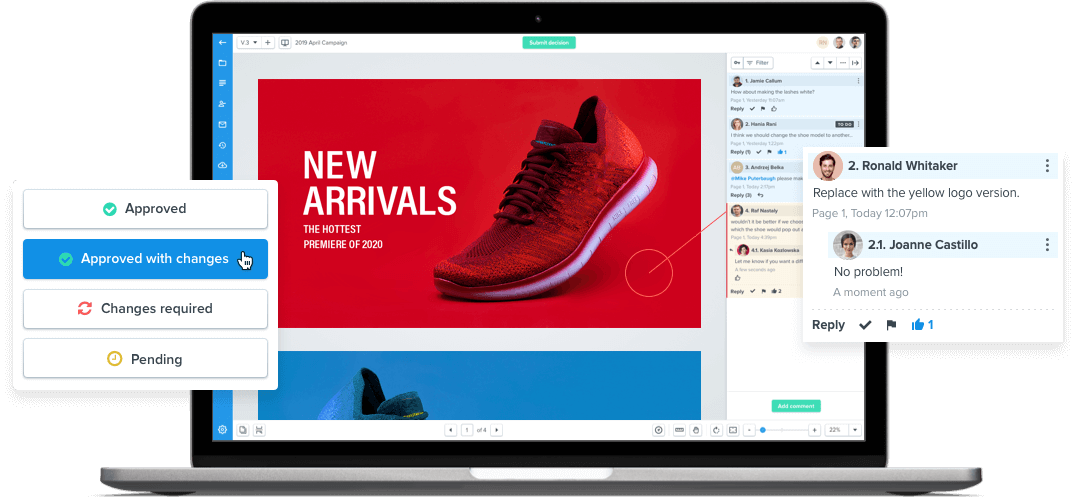
Financial Services
A big factor in creating content for finance companies is meeting compliance requirements—creative operations makes it quick and easy.
Ziflow helps financial services creative teams get content delivered on time while ensuring compliance and maintaining an audit trail of approvals.
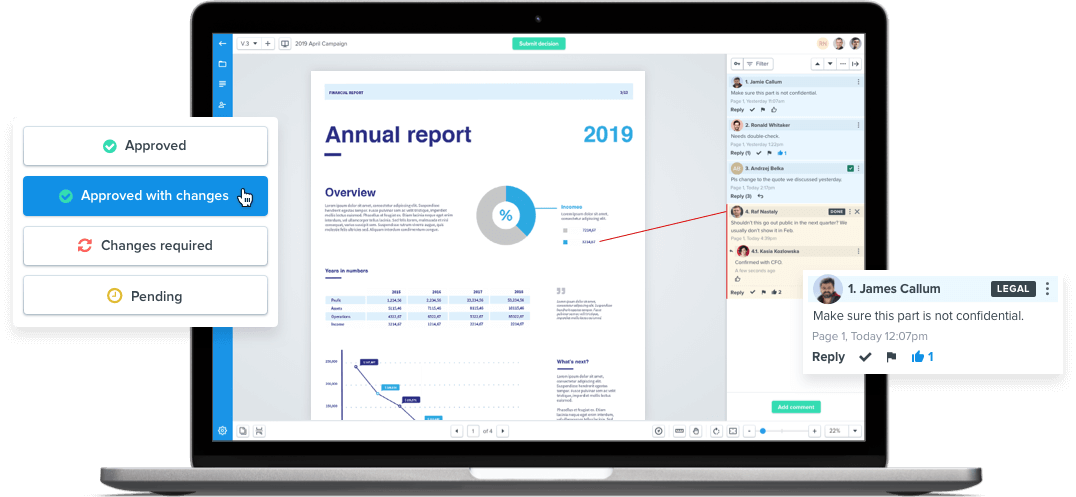
How to implement creative operations in your organization
Here’s a step-by-step process from hiring creative operations manager and reviewing existing processes, to creating new workflows and choosing software to streamline the process.
Step 1 - Hire a creative operations manager
First, you need to appoint someone to manage your creative operations. (Depending on the size of your company, this could be a VP, Director, or Manager.)
It's essential to fill this position with the right person as it's key to the following steps. So before commencing to recruit, define the role, responsibilities, and KPI metrics that will drive this new initiative. List them out—this is what you'll be basing your hiring off of.
Here’s an example from Bynder:
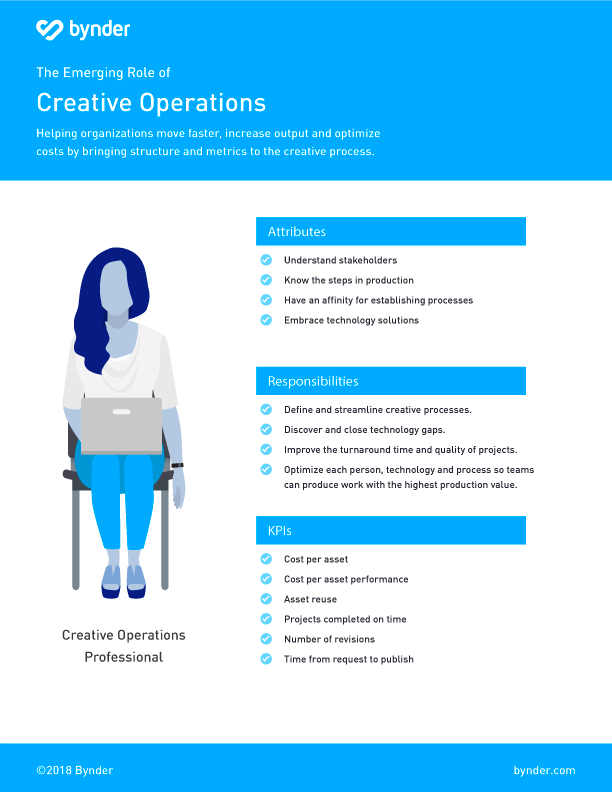
Here’s a job advertisement to give you an idea of the domain and accountabilities of a creative operations manager: Creative Operations Manager at CPG.
Step 2 - Review your current creative workflows
Before you can implement creative operations, you need to review your existing workflows.
Analyze existing processes
Before you can implement creative operations in your business, you need to have a thorough understanding of the creative processes you currently have in place. This will help you identify gaps in the way things are being done and determine just how creative operations will fit into, streamline, and improve your organization.
Here are the questions you should ask when analyzing your current creative process for creative operations. We’ll go over each of these in more detail below.
- How are creative projects managed?
- What’s the review and approval process?
- Where are the bottlenecks?
How are creative projects managed?
Think: who usually requests creative work, and what happens when they do?
To capture this information, many organizations will draft a creative brief. This is a document that outlines the vision for the project, along with details of how it will be achieved.
Information included in a brief might include:
- Quick description of the client’s company
- A summary of the project
- A list of goals for the project
- The project’s target audience
- The project’s deliverables and deadlines
- The project’s tone, messaging, and style
- A list of creative assets required
- A list of people who will be reviewing the project
What’s the review and approval process?
The review and approval process is a crucial part of your creative process. The problem is, many companies struggle with getting through without veering off schedule. If this sounds familiar, ask yourself the following questions:
- How is feedback on creative work shared?
- Who gives the feedback?
- What’s the process for applying that feedback to the work?
- How long does it typically take to go from the first version of the work to final approval? What causes the biggest delays?
- Do projects ever get stuck waiting for approval? Why?
- How many people are involved in the review process? Can this number be cut down to speed things up?
Read how a creative design agency streamlined the external review process with clients in our new case in this case study, How Creative Firm" Advent Streamlined Client Approval for Large-Scale Sports Facilities Design"
 Case Study: How Creative Firm Advent Streamlined Client Approval for Large-Scale Sports Facilities
Case Study: How Creative Firm Advent Streamlined Client Approval for Large-Scale Sports Facilities
Learn how the design firm simplified collaboration with large athletic departments at major college.
Where are the bottlenecks?
Once you have all this information, you’ll be able to interview your creative workers to find pain points, pinpoint the root of the problems, and listen to their suggested fixes.
Now, it's time to visualize your end-to-end creative process by creating a flow chart to see where in the workflow these bottlenecks lie.
More on flowcharts in the next step.
Step 3 - Create new processes and/or improve existing creative workflows
Streamline processes to achieve desired outcomes quicker.
One way to do this is by creating flowcharts that outline improved processes for creative projects. Here’s how:
- Map out your existing creative process in a flowchart.
- Review the flowchart and find where the problems are and begin thinking of different ways you might go about fixing them.
- Talk with stakeholders and key decision-makers within your organization about the problems that you’ve found, where they root from, and your suggested fixes.
- Create a new “fixed” flowchart outlining your new ideal creative process.
Here’s an example of a flowchart highlighting the bottlenecks:
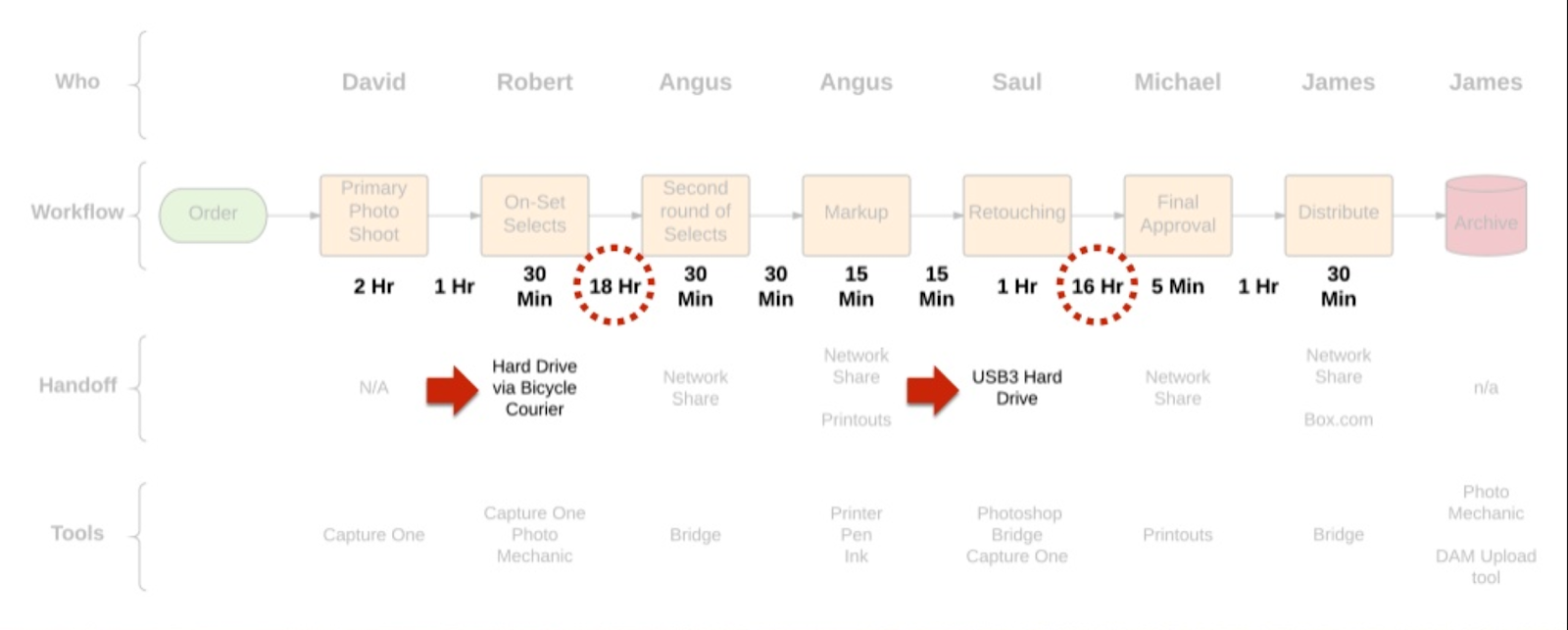
Step 4 - Select software to streamline creative operations
Ziflow can help with different aspects of creative operations:
Reviewing creative Content
Ziflow lets users annotate and comment on creative content, making it easy for various members of your team to provide clear feedback.
This is much more efficient than back-and-forth emails or even printing hard copy printouts for review. Less time spent in email threads deciphering feedback means more time creating great work.

Staying organized
Ziflow improves collaboration, meaning projects get approved and delivered faster. Reviewers can see and reply to each other’s comments, avoiding duplication of work, miscommunication, and bottlenecks.
This means fewer versions are produced before delivery—83% of creative projects reviewed and approved with Ziflow never need more than two versions before completion.
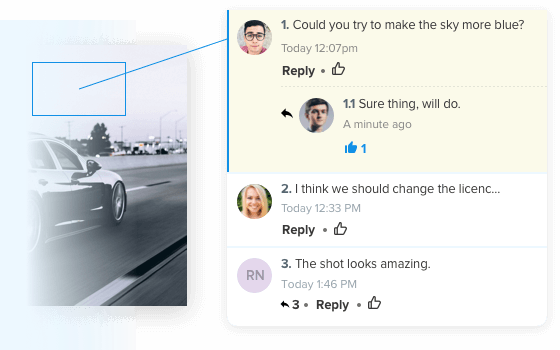
Centralizing content so everyone can Access it
Ziflow helps make sure everyone on your team is aligned by centralizing the content review and approval process. You and your team can see what needs to be reviewed and by when. (Urgent items are flagged automatically!)
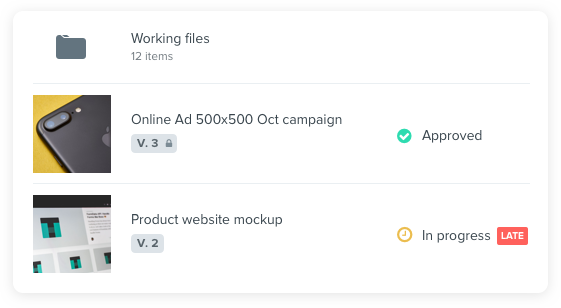
Automating unnecessary manual tasks to improve efficiency
Ziflow can automate a lot of otherwise tedious marketing tasks, like file conversion, sharing, and renaming, freeing your creative teams to focus on high-value, high-impact work.
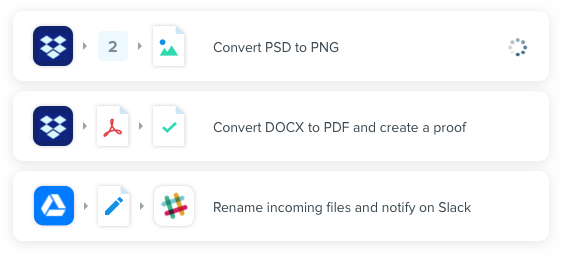
Integrating with other productivity/project management tools
Ziflow integrates seamlessly with your existing MarTech stack, making it easy to combine online proofing with the rest of your applications, whether it's project management, collaboration apps, digital asset management, or custom apps.
Conclusion about creative operations
Investing in top-notch compliance software is a game-changer for businesses aiming to simplify their compliance management processes. By embracing these innovative solutions, you'll not only streamline your workflow but also ensure your organization remains compliant with ever-changing regulations.
Don't hesitate to explore the world of compliance software and witness firsthand how it can revolutionize your approach to staying compliant in today's fast-paced business environment.
Get more tips for improving creative operations with our free ebook "10 Things You Should Automate Today for a Better Marketing Workflow."






